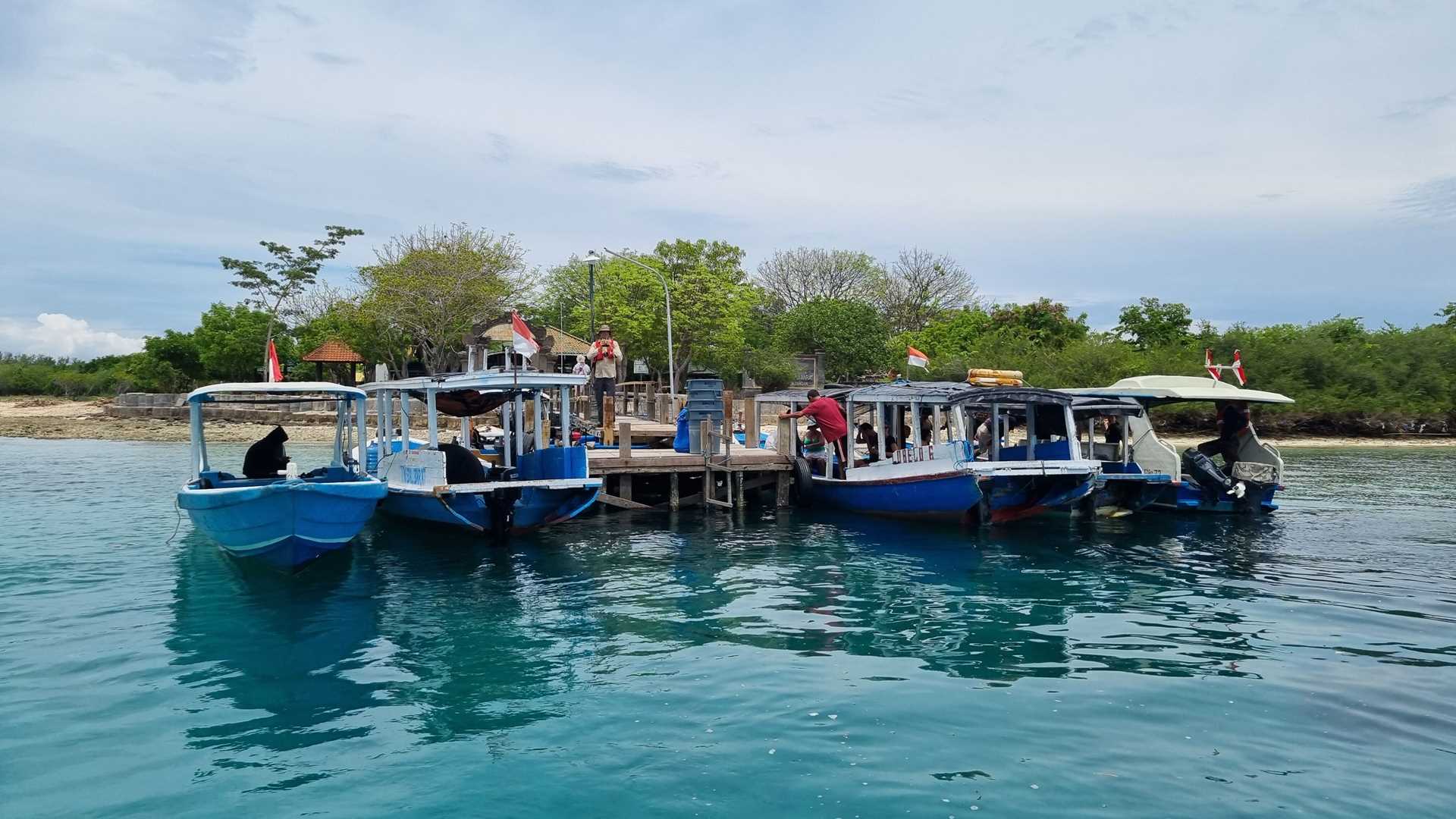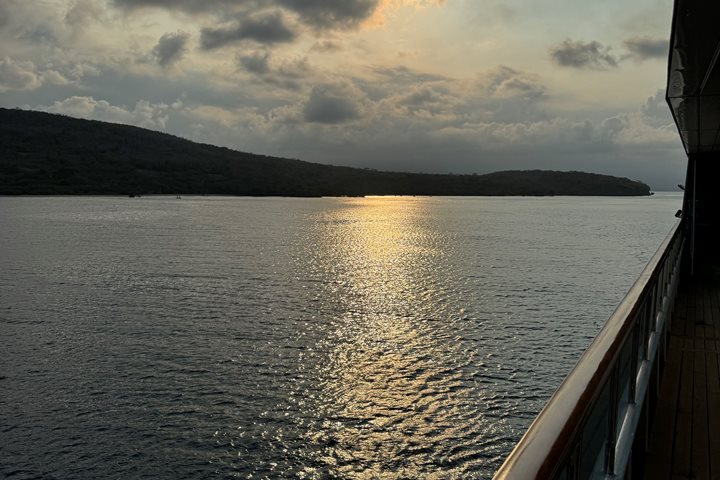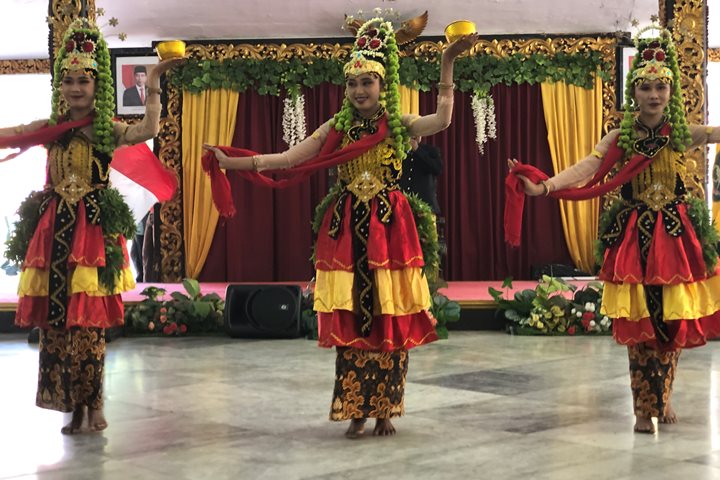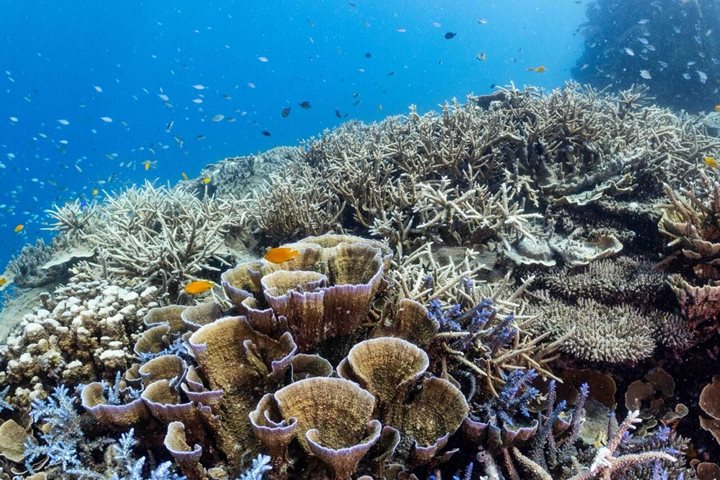Today we visited the tiny island of Menjangan on the northwest corner of Bali. This name means ‘Deer Island’ in the local language; the island is named after the rusa deer that swim across from the nearby mainland. We explored the island in small groups, and many of us got to view the rusa deer up close. We later witnessed a deer swimming on the edge of the mangroves as it sought out vegetation to graze on.
In the afternoon, the intense tropical heat continued to build. After lunch, we cooled off with some snorkeling in the channel next to the island. The clear water revealed a fantastic diversity of fish and coral species. The afternoon heat changed very quickly as a tropical storm rolled in from the mountains of Java.






